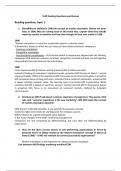Notizen
Theories of Marketing Reading Questions & Answers 2023/2024 - UvA BA Master's
- Kurs
- Hochschule
Theories of Marketing: weekly reading questions and answers (relevant for exam open-questions). Bundle: Theories of Marketing Summary from year 2023/2024 (BA Master's UvA).
[ Mehr anzeigen ]



